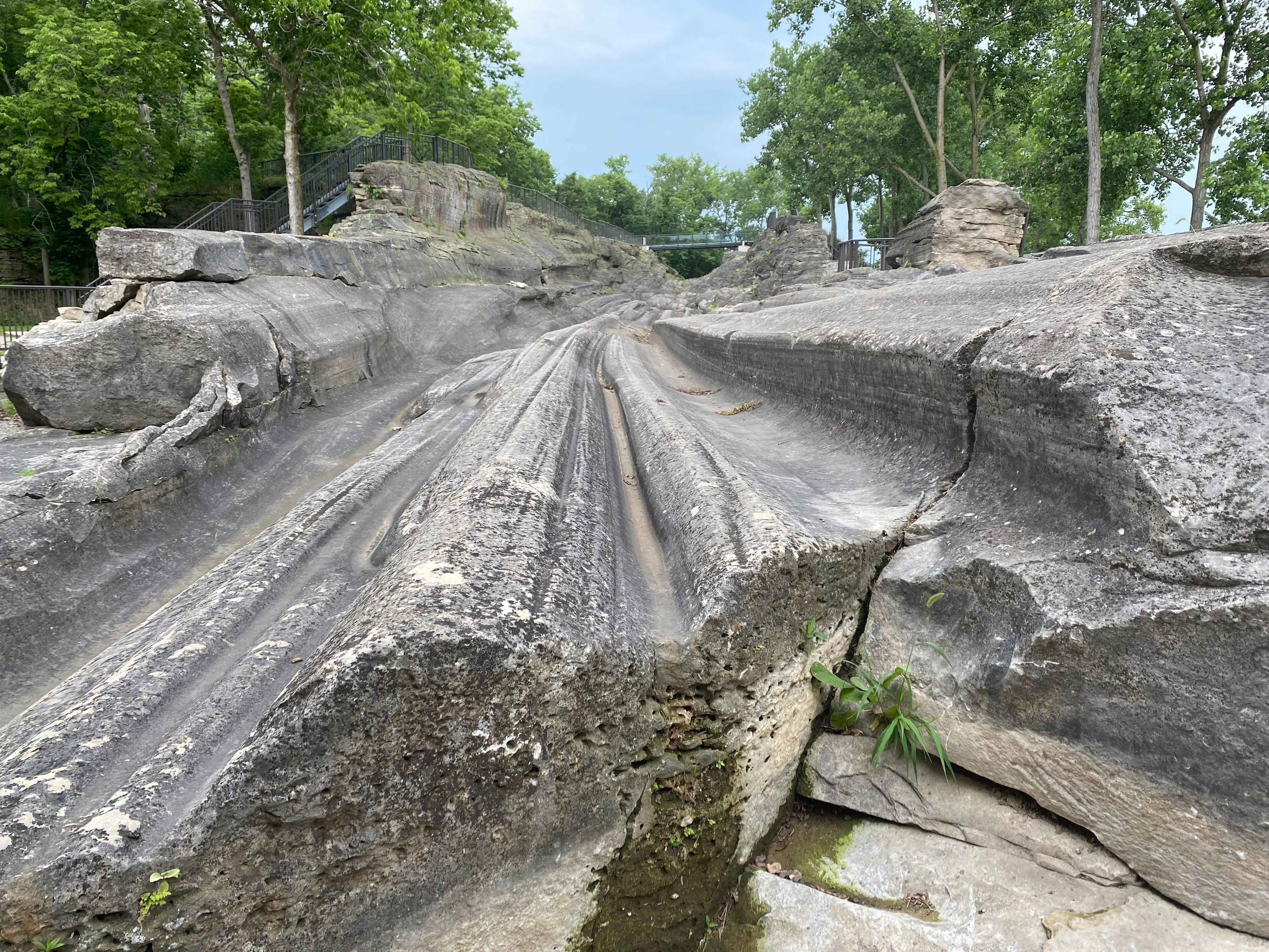Glacial Grooves on Kelleys Island: A Timeless Meditation

A Journey Through Time on Kelleys Island
Fish swimming below and birds flying above paid no heed to the ferry plowing through Lake Erie from Marblehead to Kelleys Island. The journey was a quiet reminder of nature’s enduring presence, as the ferry carried passengers who were more interested in the experience than the destination. Many of them seemed grateful for the opportunity to witness the natural beauty along Ohio’s north coast.
The 45th Fish Ohio Day on July 16th offered a unique experience for those aboard. Most of the morning was dedicated to celebrating Lake Erie’s fishing heritage, with the help of volunteers from the Lake Erie Charter Boat Association. These individuals shared their time, knowledge, and boats to provide a hands-on glimpse into the region’s rich aquatic culture. Whether passengers had caught their fill of fish or preferred to simply observe, the event provided something for everyone.
Kelleys Island was chosen as a showcase for recent efforts to improve public access to the island. These initiatives were supported by Governor Mike DeWine and led by Mary Mertz, director of the Ohio Department of Natural Resources. The island has long been a place of contrast, with some areas designated for commerce and others for private residences. Roughly 700 acres of the island belong to the state, including a state park and campground.
Compared to nearby South Bass Island, which is known for its bustling tourist scene in Put-In-Bay, Kelleys offers a slower pace. While South Bass thrives on its lively atmosphere and commercial appeal, Kelleys maintains a more tranquil vibe. This difference highlights the varying ways in which the islands have developed over time.
Columbus limestone forms the foundation of Kelleys and the other Lake Erie islands, giving them their distinct character. Each island has its own unique story shaped by history, use, and development. Kelleys, in particular, is home to several notable landmarks. One such feature is the inscription rock, where ancient people left behind carved markings that are now nearly invisible but still hold significance. Another interesting site is the remains of a winery built in the mid-1800s, which ceased operations in 1950.
The quarries that once produced stone for profit are no longer active, but they played a crucial role in shaping the landscape. During the height of extraction, glacial grooves—formed by the movement of glaciers—were likely hidden beneath layers of dirt and vegetation. Today, these grooves are visible and offer a fascinating glimpse into the geological past.
The glacial grooves on Kelleys Island speak a language that only a few can understand. Formed around 400 million years ago, they predate most of what humans consider to be the norm. The grooves themselves are relatively young, dating back about 14,000 years. They were likely formed by pressure from meltwater under a mile-high glacier.
Lake Erie, as we know it today, is far different from how it looked when it first formed. Even within the last 20 years, the lake has changed significantly. This serves as a reminder of the fleeting nature of human endeavors compared to the vast timescales of geological processes.
Humility is a quiet lesson offered by the land. The walleye fishing and scenic views are undeniably good, but they are also temporary. Visitors to the area would do well to take in the glacial grooves and reflect on the passage of time. Rain, especially when acidic, slowly erodes limestone. Freezing and thawing can even wear down granite mountains.
As the sun sets over Lake Erie, the quiet beauty of Kelleys Island reminds us that nature’s stories are written in stone, waiting for those who are willing to listen.
Post a Comment for "Glacial Grooves on Kelleys Island: A Timeless Meditation"
Post a Comment